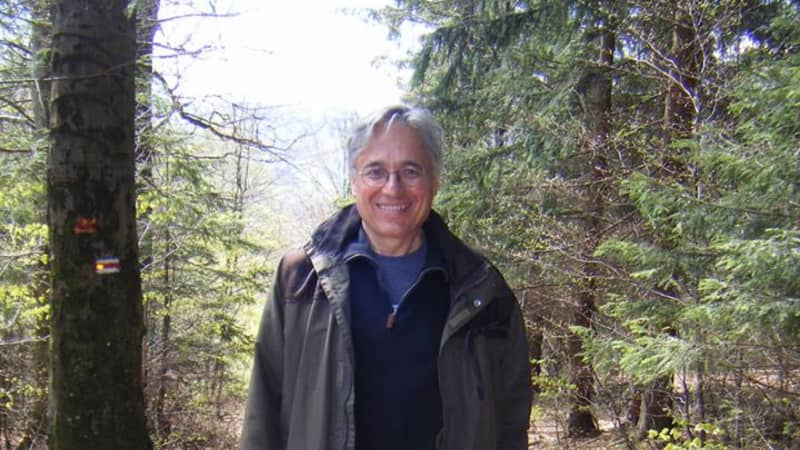AAU Professor Andrew Giarelli: Conflict in Ukraine

Observers of the world have been anxiously keeping up-to-date with the news of Russia’s invasion of Ukraine since its beginning on February 24, 2022.
The invasion in Ukraine has led to citizens fleeing the country into EU neighbors- mainly Poland, Slovakia, and Hungary. As of writing this article, that number has already surpassed a million. AAU professor Andrew Giarelli, reporting on this for The Slovak Spectator, English-language edition of Sme, Slovakia’s largest daily newspaper, has been following the happenings most closely and offers his take below.
As a “foot on the ground”, what have you observed of the Ukraine refugee crisis in Slovakia?
As I write this, I’ve just returned from a hot meal after six hours at and around the Vel’ké Slemence pedestrian border crossing from Ukraine. Temperatures are colder than normal, right around 0 centigrade. I can’t imagine how women, children and old people (like me) are surviving days and nights of such weather in some crossing areas.
I did my first reporting yesterday evening at Košice train station, where buses bring refugees from Vel‘ké Slemence and the main crossing point for both cars and pedestrians, Výšné Němec. Workers from the regional government administration and volunteers from the Greek Catholic Church were greeting arrivals, offering them food and other essentials including children’s toys, and directing them onwards: some to hostels and dormitories provided by the region, rooms donated by hotels, and free private accommodation; others to trains and buses to Bratislava, Prague, Poland, and elsewhere. Those with Ukrainian passports get free rides. However, aid workers are angry that the many third country nationals living in Ukraine are being denied this privilege. Here and at the border, many also told me that the situation was chaotic at first, with little coordination and organization among various entities trying to help, but most agreed that things were improving. They will have to, as almost certainly this is just the start of the refugee crisis created by the Russian government.
Today at the border was heartwarming and heartwrenching at the same time. I met a young Czech stockbroker finishing an all-night shift outside in the cold, a father and son from Prague who had two rental apartments they were offering to eight Ukrainians for free, and many Slovaks including police and soldiers showing the utmost kindness to these families, mostly without fathers and husbands, as they walked the last 200 meters from the checkpoint to the outdoor welcome center with its warm food and drink, toilets, tents where they could rest, and personnel directing them to buses into Košice and elsewhere.
How do you project the refugee situation developing in the future?
It is almost certainly going to get worse before it gets better. Assuming Russia’s government continues mass bombing and shelling of Ukrainian civilian centers, the aid workers agree that we will see many more arrivals, in much more desperate straits. This is just the beginning of the crisis, just as it is just the beginning of Ukraine’s fight for freedom.
What can people do to continue efforts to help refugees?
If you live in Czech Republic or Slovakia, consider coming east to help. If you have available lodging, consider offering it. And there are many donation sites, including at AAU.
Do you have any general thoughts or comments or something you would like to share with our community?
This may seem at first irrelevant, but after returning from Vel‘ké Slemence to Košice just now I had a nice hot lunch, as noted, at a traditional restaurant. My meal suggests the multi-ethnic nature of this region: the classic Slovak (and Czech) “slepačí vývar” (chicken soup), Hungarian-style “Segedínsky guláš”, and a hot mug of “Grzaniec Galicyjski”, Galician Polish red wine. So many aid workers are from the Greek Catholic Church because that is the traditional religion of the Rusyn people, who hail from western Ukraine, southern Poland and eastern Slovakia. They are helping Ukrainians from Lviv to Kyjev to Donetsk. All of these Slavic peoples and traditions ignore and cross national borders, but they do it very differently from Vladimir Putin’s way. And, ironically, he has managed to unite all of them against him.
At‘ žije svoboda. Slava Ukraini.
Andrew Giarelli returned to Prague on Sunday, 6 March, however, is thinking to return to Slovakia soon. He is currently a senior lecturer at AAU and chair of the Department of Arts, Culture, and Literature. In 2011, he started teaching at AAU firstly in the intensive summer courses, then just fall semesters, and in 2016 full-time. Though now in the School of Humanities and Social Sciences, Andrew started in the former School of Journalism (now Journalism, Media, and Visual Arts) and still sometimes teaches and advises journalism students. Since graduating from Yale University in 1975, he has always worked in some capacity as a journalist. Most recently, in his capacity as a freelance journalist, he has created pieces for The Slovak Spectator.
The Slovak Spectator is the English language edition of SME, the largest Slovak daily newspaper. Covering local news, culture, and business, the Slovak Spectator is available on a subscription basis. Andrew has written two pieces regarding the war, one an opinion piece here and another retelling accounts from Ukrainian refugees here.